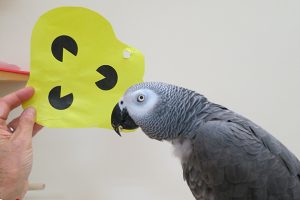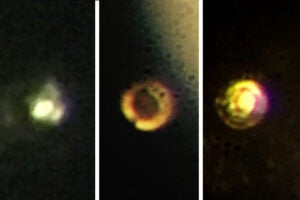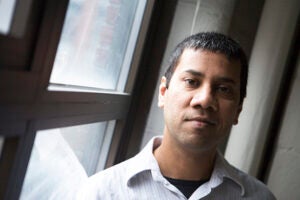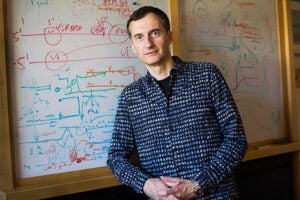Tag: Reuell
-
Nation & World
How the brain handles tools
A new study shows that, despite having no experience using tools with their hands, the brains of people born without hands represent tools and hands much the same as seen in the brains of people born with hands.

-
Nation & World
From drinking straws to robots
Inspired by arthropod insects and spiders, scientists George Whitesides and Alex Nemiroski have created a type of semi-soft robot capable of walking, using drinking straws, and inflatable tubing. The team was even able to create a robotic water strider capable of pushing itself along the water’s surface.
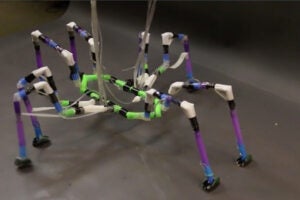
-
Nation & World
Figuring out superconductors
A team of physicists has taken a crucial step toward understanding superconductors by creating a quantum antiferromagnet from an ultracold gas of hundreds of lithium atoms.
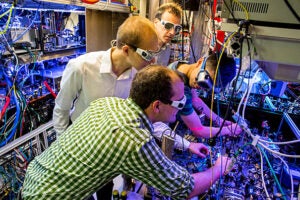
-
Nation & World
Sanes receives Gruber Neuroscience Prize
Joshua R. Sanes, the Jeff C. Tarr Professor of Molecular and Cellular Biology and founding director of the Center for Brain Science, has been named recipient of the 2017 Gruber Neuroscience Prize.
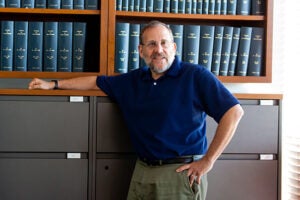
-
Nation & World
The power of picturing thoughts
A new Harvard study shows that people create visual images to accompany their inner speech even when they are prompted to use verbal thinking, suggesting that visual thinking is deeply ingrained in the human brain.
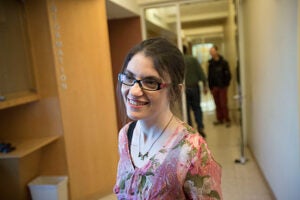
-
Nation & World
Me, steal? Impossible
New findings suggest a surprisingly common default in human behavior: the view that immoral actions are impossible.
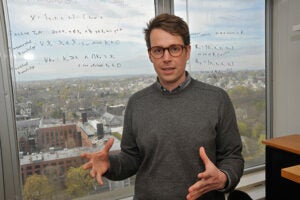
-
Nation & World
‘Innovative’ teaching is recognized
Professors Elena Kramer and Martin Nowak have been named the recipients of the 2016 Fannie Cox Prize for Excellence in Science Teaching.
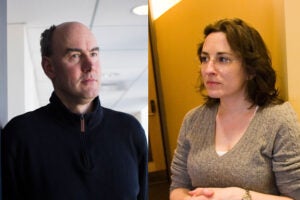
-
Nation & World
FAS staff acknowledged for their contributions
The dozens of FAS staff who gathered in University Hall on March 9 were honored as Dean’s Distinction award winners, with 59 recipients receiving a total of 61 awards.
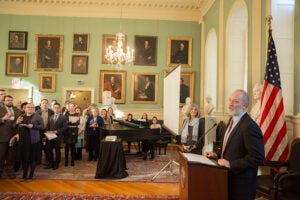
-
Nation & World
A mother’s influence
Researchers have shown, for the first time, that chimpanzees learn certain grooming behaviors from their mothers. Once learned, chimps continued to perform the behavior long after the deaths of their mothers.
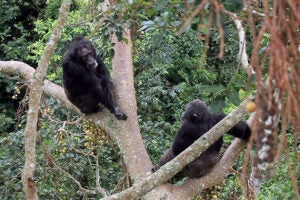
-
Nation & World
Gut details
New findings have the potential to help researchers more accurately identify microbiome enzymes and quantify their relative abundance.
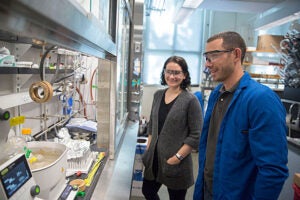
-
Nation & World
When bias hurts profits
Based on data collected from a French grocery store chain, a new Harvard study has found that minority workers were far less efficient in a handful of important metrics when working with biased managers.

-
Nation & World
Lab opens doors for an undergrad experience
As part of Harvard’s Wintersession, a handful of freshmen got the chance to experience the reality of lab work by exploring how altering genes in yeast affected the cells’ functions.
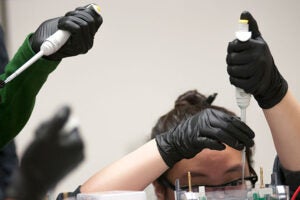
-
Nation & World
Catalyzing discovery
In a trio of studies published earlier this month, researchers have shown that the process of catalysis is more dynamic than previously imagined, and that molecular forces can vastly influence the process.
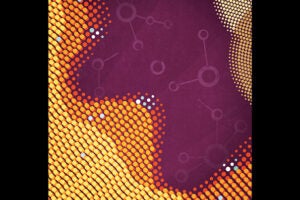
-
Nation & World
A revised portrait of psychopaths
A study suggests that while psychopaths do feel regret, however, it doesn’t affect their choices.

-
Nation & World
Recognition for their discoveries
Harvard physicists Cumrun Vafa and Andrew Strominger have been named winners of the 2017 Breakthrough Prize in Fundamental Physics in recognition of their groundbreaking work in a number of areas, including black hole theory, quantum gravity, and string theory.
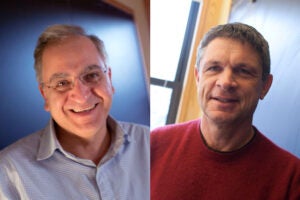
-
Nation & World
Spotting speedy brain activity
Using ultra-fast MRI scans, scientists are able to track rapid oscillations in brain activity that previously would have gone undetected, a development that could open the door to understanding fast-occurring cognitive processes that once appeared off-limits to scientists.
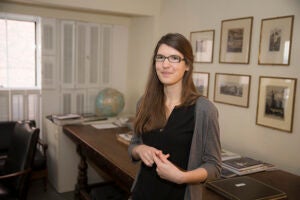
-
Nation & World
Diamonds are a lab’s best friend
Using the atomic-scale quantum defects in diamonds known as nitrogen-vacancy centers to detect the magnetic field generated by neural signals, scientists working in the lab of Ronald Walsworth, a faculty member in Harvard’s Center for Brain Science and Physics Department, demonstrated a noninvasive technique that can show the activity of neurons.
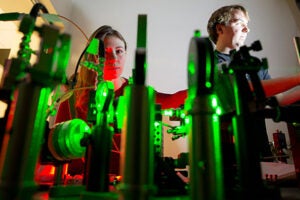
-
Nation & World
Harvard students, meet the Stone Age
Students taking part in a new freshman seminar class learn to appreciate the sophistication of Neanderthals by manufacturing their own stone tools from scratch.
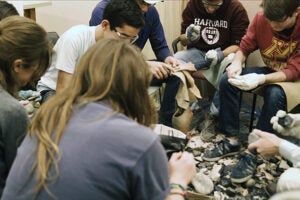
-
Nation & World
Two Harvard scholars headed across the pond
Two Harvard students were among those selected to receive prestigious Marshall Scholarships, which support up to two years of study in the United Kingdom.

-
Nation & World
What do we know about suicide? Not nearly enough
Despite decades of research aimed at understanding suicide, scientists are no better at predicting self-harm than they were a half-century ago.
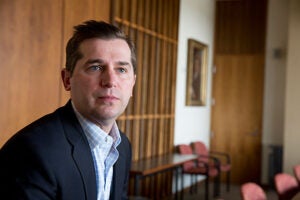
-
Nation & World
Science, meet YouTube
Harvard graduate student Molly Edwards is the creator and host of “Science IRL (In Real Life),” a YouTube channel she launched more than a year ago while working as a lab technician at New York University. The show is dedicated to taking viewers inside labs for an up-close-and-personal view of the day-to-day work of scientists.

-
Nation & World
Ten from Harvard named HHMI Faculty Scholars
Ten Harvard scientists have won the support of a new funding initiative by the Howard Hughes Medical Institute, the Simons Foundation, and the Gates Foundation.
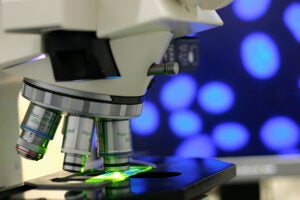
-
Nation & World
How the brain develops
In an effort to get a clearer picture of how the brain and the connections between its regions change throughout development, Harvard scientists and researchers from three other universities will share a $14 million grant to support one of the most comprehensive brain-imaging studies ever undertaken.
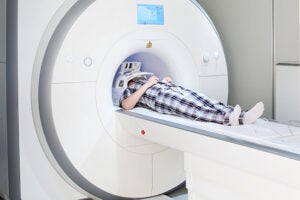
-
Nation & World
New way to model molecules
Scientists from Harvard and Google have demonstrated for the first time that a quantum computer could be used to model the electron interactions in a complex molecule.
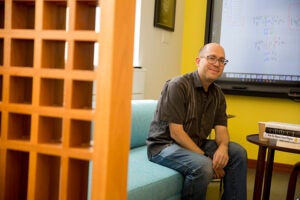
-
Nation & World
Similar designs, 100 million years apart
A study found that both Rusingoryx atopocranion, a relative of the wildebeest, and hadrosaur dinosaurs evolved large bony domes on their foreheads, which were likely used as resonating chambers to warn of predators and communicate with others.
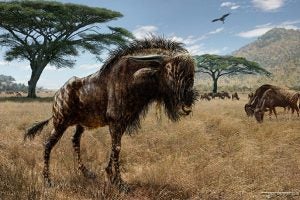
-
Nation & World
Minding the details of mind wandering
A new study sheds light on important differences between intentional and unintentional mind wandering.
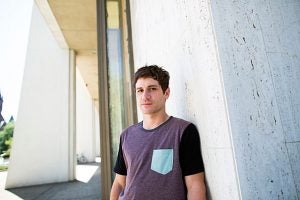
-
Nation & World
The parrot knows shapes
Despite a visual system vastly different from that of humans, tests showed the bird could successfully identify both Kanizsa figures and occluded shapes. The findings suggest that birds may process visual information in a way that is similar to humans.
